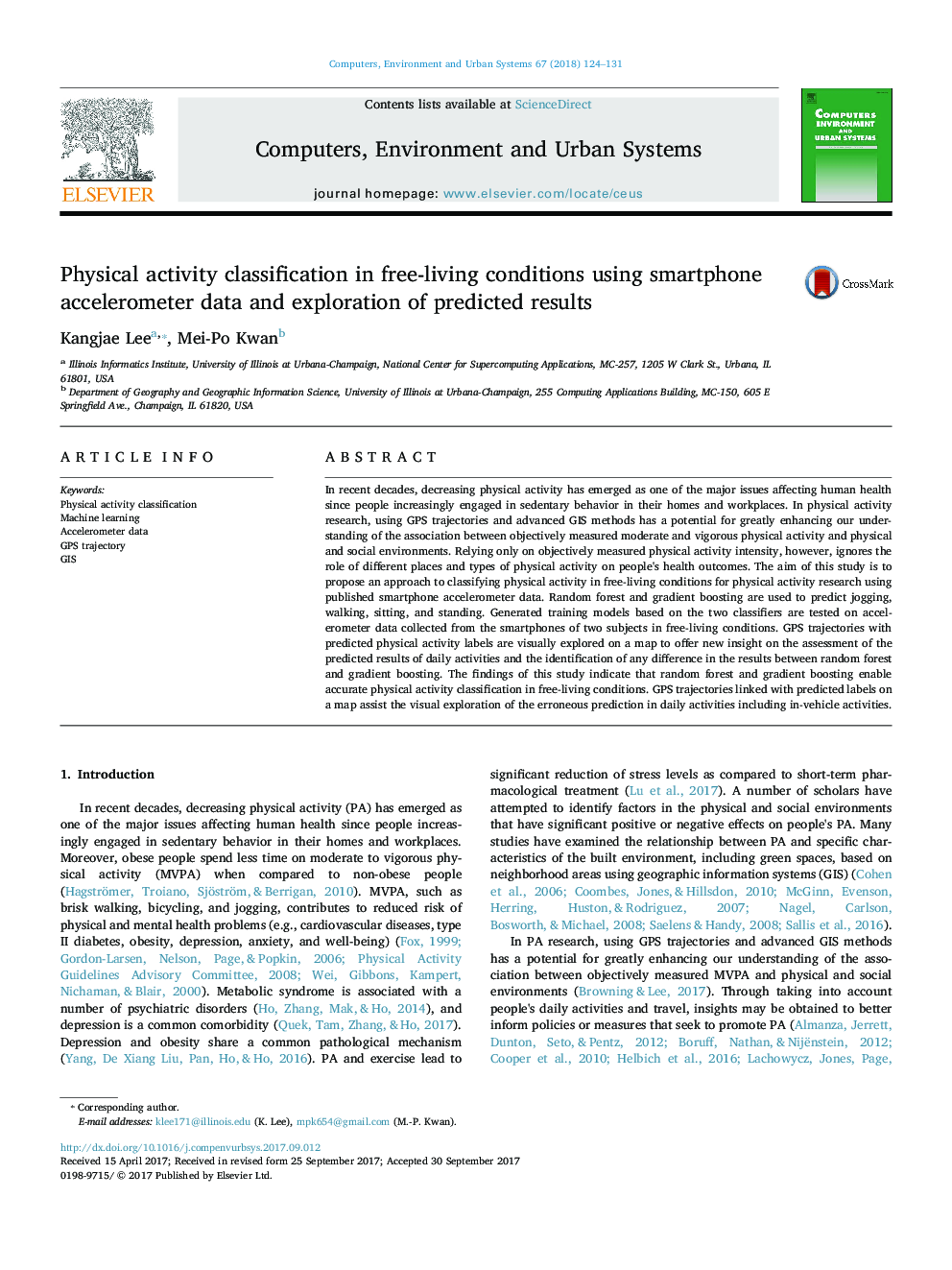| کد مقاله | کد نشریه | سال انتشار | مقاله انگلیسی | نسخه تمام متن |
|---|---|---|---|---|
| 4965111 | 1448223 | 2018 | 8 صفحه PDF | دانلود رایگان |
- The aim of this study is to propose an approach to physical activity classification in free-living conditions.
- Two supervised machine learning classifiers are tested to classify four physical activity types.
- Two learning models identifies different daily activities with a series of plausible physical activity types.
- Publicly released accelerometer data are found to be valid in the physical activity classification in free-living conditions.
In recent decades, decreasing physical activity has emerged as one of the major issues affecting human health since people increasingly engaged in sedentary behavior in their homes and workplaces. In physical activity research, using GPS trajectories and advanced GIS methods has a potential for greatly enhancing our understanding of the association between objectively measured moderate and vigorous physical activity and physical and social environments. Relying only on objectively measured physical activity intensity, however, ignores the role of different places and types of physical activity on people's health outcomes. The aim of this study is to propose an approach to classifying physical activity in free-living conditions for physical activity research using published smartphone accelerometer data. Random forest and gradient boosting are used to predict jogging, walking, sitting, and standing. Generated training models based on the two classifiers are tested on accelerometer data collected from the smartphones of two subjects in free-living conditions. GPS trajectories with predicted physical activity labels are visually explored on a map to offer new insight on the assessment of the predicted results of daily activities and the identification of any difference in the results between random forest and gradient boosting. The findings of this study indicate that random forest and gradient boosting enable accurate physical activity classification in free-living conditions. GPS trajectories linked with predicted labels on a map assist the visual exploration of the erroneous prediction in daily activities including in-vehicle activities.
Journal: Computers, Environment and Urban Systems - Volume 67, January 2018, Pages 124-131
